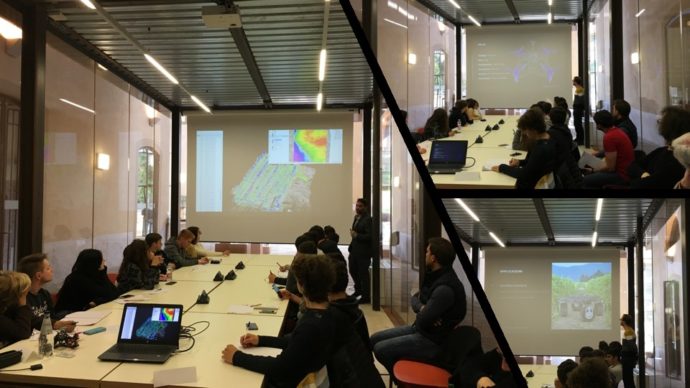The concept of Precision Agriculture regards technologic tools, which collect data supporting agriculture production. Gate Centre (Galileo Aggregator for Technology Enterprise), as an ecosystem of technology companies, is interested in such topic.
On the 6th of May, the Centre hosted a meeting about technologies dedicated to crop, ground and agricultural product analysis. The aim of the meeting was to get in touch companies, students and experts. Indeed, the Centre, maintaining a direct link with Pisa University and the whole surrounding school system, is often involved in educational events.
The students (in their fifth year of agrarian high school), during this meeting, had the opportunity to acquire useful information about precision agriculture in view of their forthcoming career.
Stefano Giordano and Nicola Silvestri (experts of Pisa University) showed the university point of view, while three companies (TOI – Things On Internet, Zefiro Innovation and Sigma Engineering) talked about their experience in the business world.
Stefano Giordano and Nicola Silvestri presented their research projects about ultrasound application in wild fauna repulsion and remote sensing application in weed identification.
The three companies, on the other hand, showed students their products and explained their utility for precision agriculture. In particular TOI gave an overview of TOI 4ZeroPlatform (a complete and adaptable IoT Stack composed of a smart acquisition unit and a Cloud analytics and dashboard) and its advantages in precision agriculture applications. Sigma engineering presented its drone prototype called “Efesto”, which could be successfully applied to agriculture, in particular to precision viticulture. It is able to simultaneously acquire and elaborate data coming from a plurality of sensors, allowing a real-time control of crops. Zefiro Innovation introduced their multi-spectral and thermal cameras, which are able to detect the plants real necessities with economic, environmental and qualitative benefits for forestry and agriculture.

